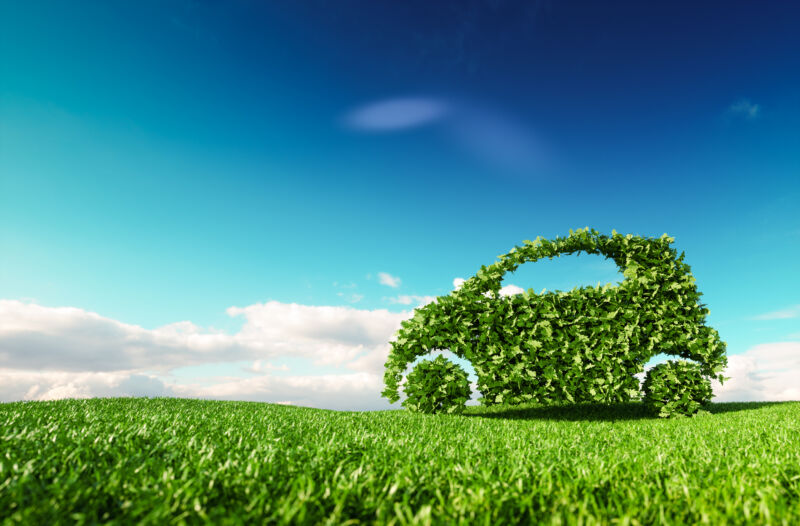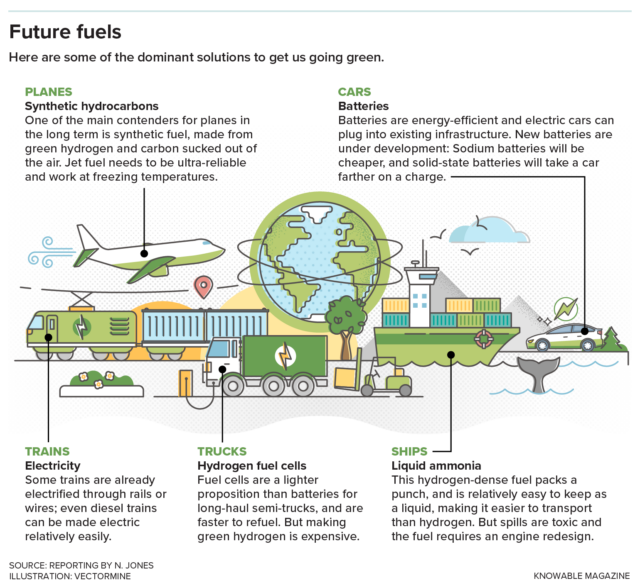
As the world races to decarbonize everything from the electricity grid to industry, it faces particular challenges with transportation, which alone is responsible for about a quarter of the planet’s energy-related greenhouse gas emissions. The fuels that power transportation must not only be green, cheap and powerful, but also light and safe enough to carry.
Fossil fuels, primarily gasoline and diesel, have proven to be remarkably effective at powering a wide range of mobile machinery. Since the Industrial Revolution, humanity has perfected the art of mining, refining, distributing, and burning them in engines, creating a vast and hard-to-move industry. Now we must move away from fossil fuels, and the world cannot find a one-size-fits-all replacement.
Each mode of transportation has its own quirks, which is one reason we now have a variety of hydrocarbon compositions, from gasoline to diesel, from bunker fuel to jet fuel. Cars need a convenient, lightweight source of energy; container ships need enough juice to last for months; airplanes need to be absolutely reliable and able to operate in subzero temperatures. As fossil fuels are phased out, the transportation fuel landscape is “getting more diverse,” says Timothy Lipman, co-director of the Transportation Sustainability Research Center at the University of California, Berkeley.
Each energy solution has its pros and cons. Batteries are efficient, but struggle with their weight. Hydrogen, the lightest element in the universe, provides a huge energy boost, but it’s expensive to make in a “green” way and, as a gas, takes up a lot of space. Liquid fuels that carry hydrogen are easier to transport or drop into an existing engine, but ammonia is toxic, biofuels are scarce, and synthetic hydrocarbons are difficult to produce.
The scale of this energy transition is enormous, and the amount of renewable energy the world will need to produce the electricity and alternative fuels it needs is “a little staggering,” says mechanical engineer Keith Wipke, manager of the Fuel Cell and Hydrogen Technologies Program at the National Renewable Energy Laboratory in Colorado. Everything from the electric grid to buildings to industry is also thirsty for renewable energy: Global electricity demand could more than double by 2050, according to estimates. Fortunately, analyses suggest that renewables are up to the task. “We need to put our foot on the renewables accelerator as soon as possible, 100 percent, and it will all be used,” Wipke says.

To stay below 1.5 degrees of global warming and limit some of the worst effects of climate change, the Intergovernmental Panel on Climate Change recommends that the world reach net zero emissions by 2050. That means removing any greenhouse gases we still put into the air through other means, such as forests or carbon capture. Groups including the International Energy Agency (IEA), a Paris-based intergovernmental organization that analyzes the global energy sector, have mapped out pathways that could get the world to net zero.
The IEA’s path describes a massive, hard-to-achieve shift across the globe, including all modes of transportation. Their goal: replace fossil fuels (which release long-locked carbon into the air, where it wreaks havoc on the climate) with something more sustainable, like green hydrogen or biofuels (which either produce no greenhouse gases at all or recycle the gases already in the air).
While some transportation sectors are still in flux, we can now get a good idea of what will likely power the ships, planes, trains, and automobiles of tomorrow. Here’s a glimpse into that future.

